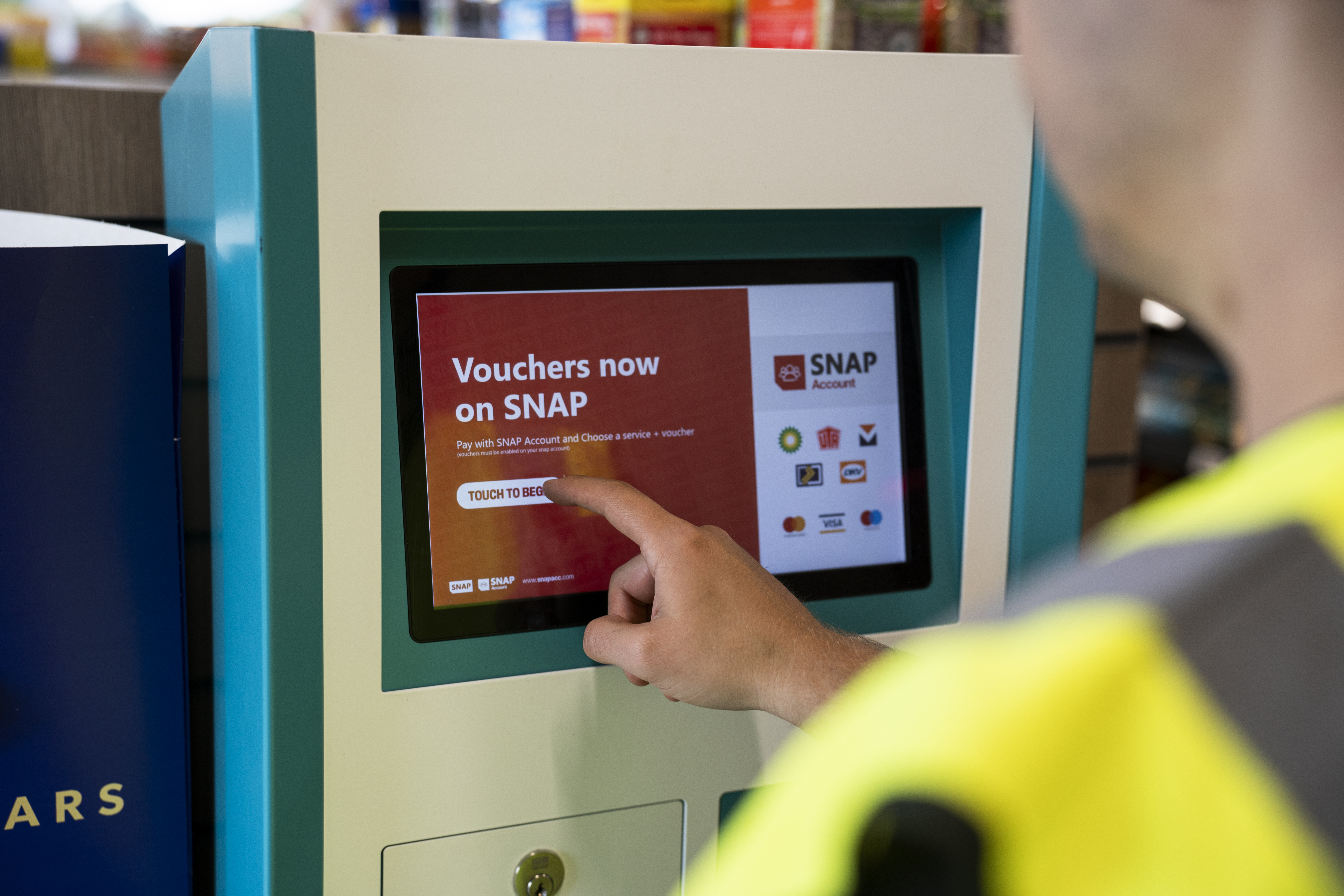
Guest
Hoe SNAP met behulp van technologie een revolutie teweegbrengt in de vrachtwagenindustrie
Gemaakt: 22-01-2025
•
Bijgewerkt: 29-01-2025
De vrachtwagenindustrie ondergaat een technologische revolutie - en hier bij SNAP verleggen we voortdurend de grenzen van innovatie om de veiligheid, de efficiëntie en het gemak voor chauffeurs en wagenparkbeheerders in heel Europa te verbeteren en daarbij nieuwe normen te stellen.
De kern van ons aanbod? Onze uitgebreide digitale marktplaats - een one-stop platform dat het beheer van activiteiten opnieuw definieert. Lees verder om te leren hoe...
Digitale marktplaats
Dit heeft twee hoofdelementen.
intruck
intruck is uitgegroeid tot een onmisbaar hulpmiddel voor chauffeurs die over het uitgebreide wegennet van Europa navigeren. Het is veel meer dan alleen een mobiele app die hen helpt de weg te vinden; het is een dynamisch hulpmiddel dat de kracht van informatie rechtstreeks in hun handen legt. Bovendien kunnen ze vooraf parkeerplaatsen langs hun route reserveren.
SNAP-portaal
Wat ons webgebaseerde platform betreft, stelt de innovatieve tool wagenparkbeheerders in staat om vooraf parkeerplaatsen voor chauffeurs te reserveren, waardoor de efficiëntie van de routeplanning aanzienlijk wordt verbeterd. Door dit niveau van vooruitziendheid en controle te bieden, kunnen we de vlootactiviteiten optimaliseren, de stilstandtijd verminderen en het algemene logistieke beheer verbeteren.
Netwerken uitbreiden, diensten verbeteren
Onze toewijding aan het verbeteren van de truckervaring blijkt duidelijk uit ons snel groeiende netwerk van servicepunten in heel Europa. Veel van deze locaties zijn voorzien van verbeterde veiligheidsvoorzieningen - om tegemoet te komen aan de kritieke behoefte aan veilige rustplaatsen voor chauffeurs en hun waardevolle lading.
Bovendien gaat ons netwerk verder dan parkeren - we hebben Europese [truckwashes] geïntegreerd (https://snapacc.com/newsroom/how-to-find-a-truck-wash-near-you/), wat onze holistische benadering aantoont om aan de behoeften van chauffeurs onderweg te voldoen. Bovendien kunnen we via ons partnerbedrijf Certas Energy SNAP Fuel aanbieden - dit geeft vrachtwagenchauffeurs toegang tot voordelig tanken bij hun tankstations, wat nog een laag gemak en kostenefficiëntie toevoegt.

Digitale betalingen en automatisering
We hebben ook een revolutie ontketend via ons digitale betalingssysteem. Omdat contante transacties in de sector niet meer nodig zijn, is het geen wonder dat het elke 13 seconden in Europa wordt gebruikt. Bovendien heeft het geresulteerd in een verbeterde veiligheid voor chauffeurs en een gestroomlijnd uitgavenbeheer voor wagenparkbeheerders.
Er zijn ook functies die boekings- en transactieprocessen automatiseren. Deze vereenvoudigen administratieve taken voor zowel truckers als wagenparkbeheerders aanzienlijk, wat niet alleen tijd bespaart, maar ook de kans op menselijke fouten verkleint - wat leidt tot efficiëntere en nauwkeurigere activiteiten.
De toekomst veilig stellen
Omdat we het cruciale belang van veiligheid in de sector erkennen, hebben we een speciale [Access & Security divisie] (https://snapaccessandsecurity.com/). Deze biedt op maat gemaakte producten om transportlocaties, voertuigen en vracht te beschermen. In een tijdperk waarin diefstal van vracht en beveiliging van locaties grote zorgen baren, is onze proactieve benadering van beveiliging de sleutel tot het aanpakken van de meest dringende uitdagingen van de sector.
Integratie en innovatie - de SNAP-manier
We blijven innoveren en ons technologisch aanbod uitbreiden, zodat we wendbaar blijven door onze diensten bij te werken en te verbeteren om aan de veranderende behoeften van de sector te voldoen. Bovendien zullen we er bij de groei van ons netwerk in verschillende landen voor zorgen dat we de verschillen in regelgeving en infrastructuur kunnen overbruggen - net zoals we hebben gedaan met onze recente uitbreiding naar Oostenrijk, Bulgarije, Tsjechië, Griekenland, Hongarije, Italië en Roemenië.
Door de pijnpunten in de sector aan te pakken met behulp van technologie, verbeteren we bestaande processen en geven we de toekomst van logistiek een nieuwe vorm - waardoor onze positie als leider op het gebied van tech-trucking nog steviger wordt.
Wil je meer weten over SNAP en wat we doen? Neem dan contact op via +44 (0)1603 777242.



